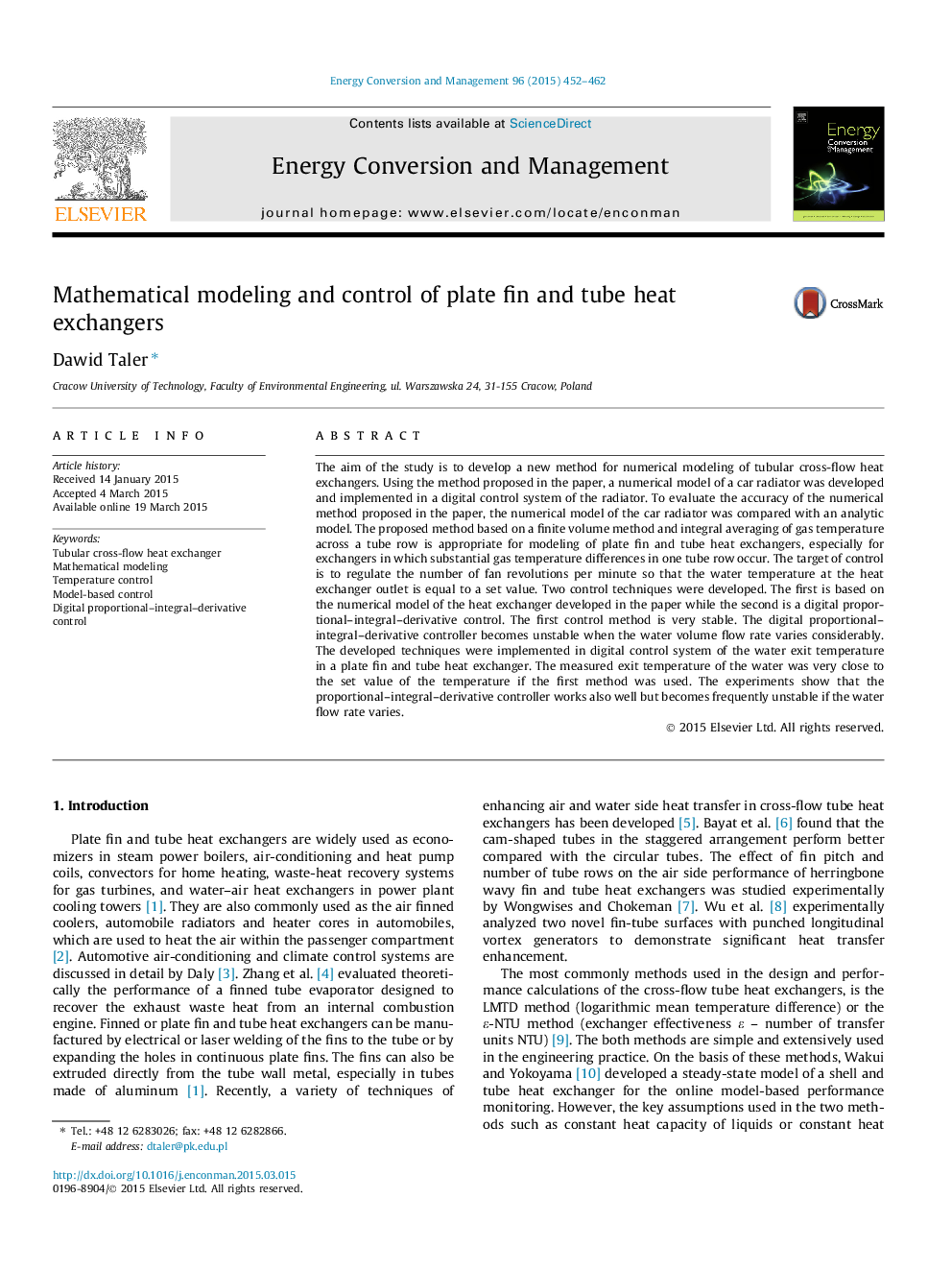| کد مقاله | کد نشریه | سال انتشار | مقاله انگلیسی | نسخه تمام متن |
|---|---|---|---|---|
| 763595 | 1462866 | 2015 | 11 صفحه PDF | دانلود رایگان |
• A method for numerical modeling of plate fin and tube heat exchangers was proposed.
• A numerical model of an automobile radiator was developed.
• Numerical models of the radiator were compared with an exact analytical model.
• A model-based control system of water outlet temperature was built and tested.
• A digital proportional–integral–derivative controller of heat exchanger was tested.
The aim of the study is to develop a new method for numerical modeling of tubular cross-flow heat exchangers. Using the method proposed in the paper, a numerical model of a car radiator was developed and implemented in a digital control system of the radiator. To evaluate the accuracy of the numerical method proposed in the paper, the numerical model of the car radiator was compared with an analytic model. The proposed method based on a finite volume method and integral averaging of gas temperature across a tube row is appropriate for modeling of plate fin and tube heat exchangers, especially for exchangers in which substantial gas temperature differences in one tube row occur. The target of control is to regulate the number of fan revolutions per minute so that the water temperature at the heat exchanger outlet is equal to a set value. Two control techniques were developed. The first is based on the numerical model of the heat exchanger developed in the paper while the second is a digital proportional–integral–derivative control. The first control method is very stable. The digital proportional–integral–derivative controller becomes unstable when the water volume flow rate varies considerably. The developed techniques were implemented in digital control system of the water exit temperature in a plate fin and tube heat exchanger. The measured exit temperature of the water was very close to the set value of the temperature if the first method was used. The experiments show that the proportional–integral–derivative controller works also well but becomes frequently unstable if the water flow rate varies.
Journal: Energy Conversion and Management - Volume 96, 15 May 2015, Pages 452–462
